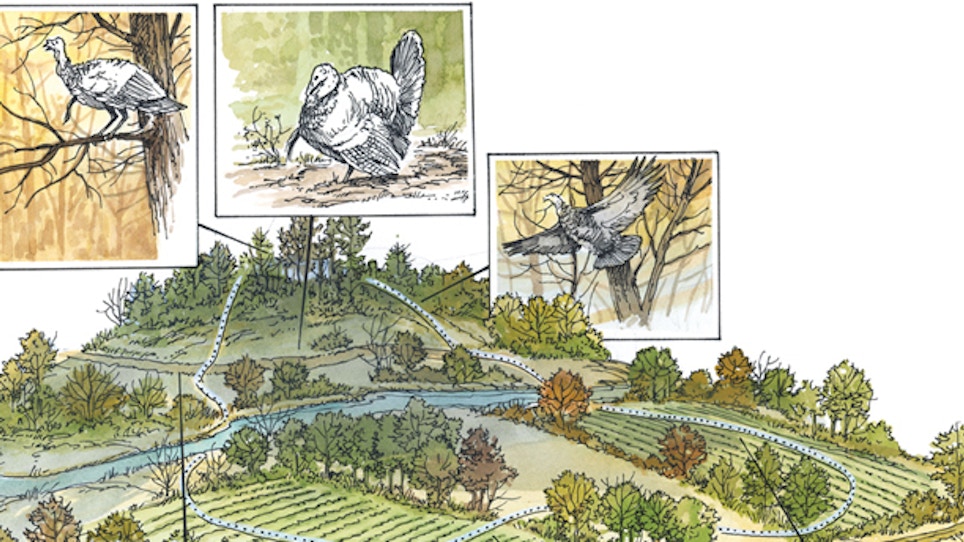At daylight the male wild turkey's daily routine starts by gobbling at everything from yelping hens to howling coyotes. Like clockwork, he flies down with his harem of hens, gobbles some more, struts around, leaves the area with his ladies and shuts his mouth.
Once again, you’re left sitting alone against a tree trunk with no one to talk to, wondering where in the heck that longbeard went after flydown. By midmorning you’ve packed up and headed for the truck, wondering if the crappie will be biting white-chartreuse or red-chartreuse that afternoon. Don’t give up too soon on the gobblers, though. He’s still close if you know where to look.
Mark Hatfield, senior wildlife biologist with the National Wild Turkey Federation, helps solve the mystery by describing the daily routine of a mature gobbler during peak breeding season.
Sunrise to Two Hours After Sunrise
A gobbler will start the day gobbling on the roost, often strutting on the limb, to demonstrate his dominance to other males and to attract hens.
After flydown, the gobbler will often go to a predetermined strut zone to gobble and strut. Juvenile males, known as jakes, also will strut and gobble. But they are less successful at courting hens unless there are an inadequate number of mature males in the neighborhood.
Mid-Morning
Once the gobbler attracts hens, he'll stop gobbling long enough to mate with as many hens as possible. A hen will mate with a gobbler more than once, incidentally.
Late Morning to Early Afternoon
After the gobbler has bred all the hens, they will disperse to lay eggs. On average, hens will lay one egg per day until the clutch, usually 9-12 eggs, is complete.
Gobbling and strutting activity usually increase during laying period as toms try to locate unmated hens or hens that experience nest failure.
Now is an excellent time to kill a gobbler, as hens to breed become scarce.
Late Afternoon to Early Evening
Gobbling will drop dramatically during the evening hours as gobblers primarily feed and work their way back to their roost sites.
Gobblers will often gobble before or after they fly up to their roost to establish dominance and inform other males and hens of their location.






